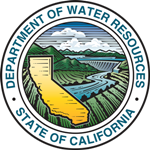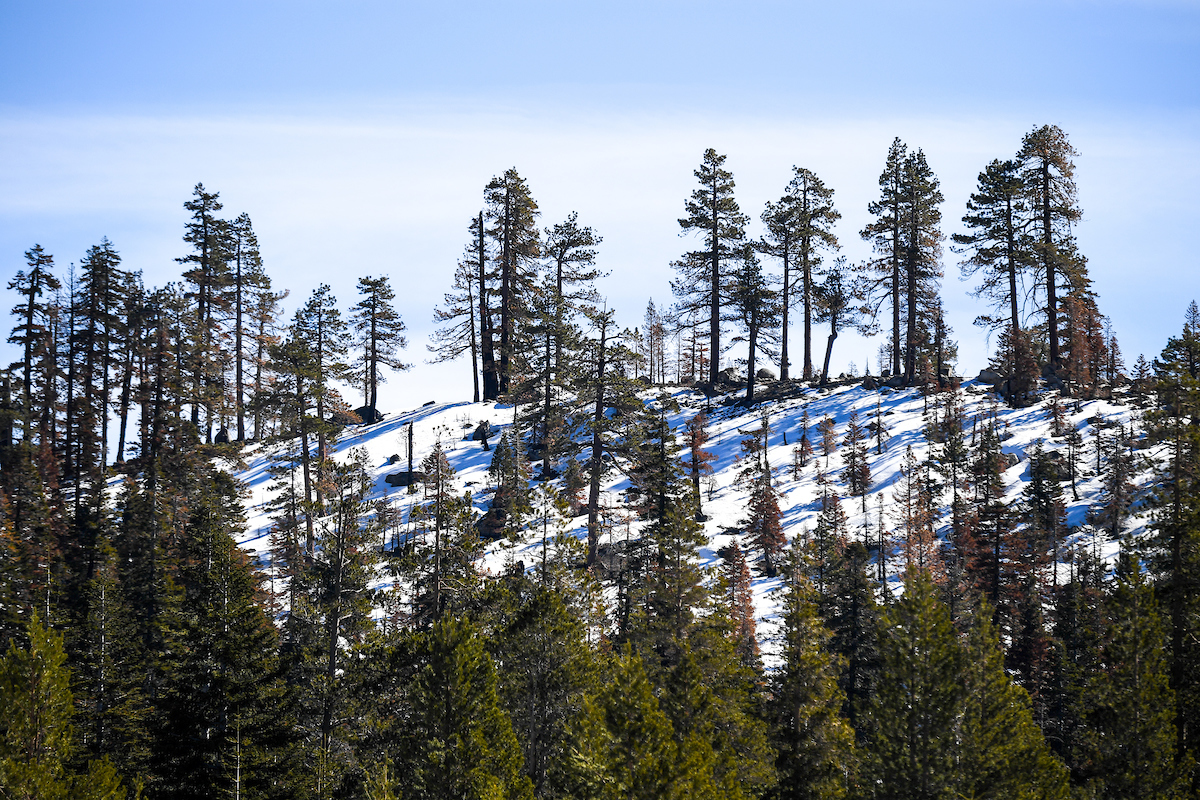 From the Department of Water Resources:
From the Department of Water Resources:
The Department of Water Resources has finished the April 19, 2022 Bulletin 120 (B120) forecast update. The forecast includes observed conditions through the morning of Tuesday, April 19, 2022.
The forecasts are posted at:
- B120 Update: https://cdec.water.ca.gov/reportapp/javareports?name=B120UP
- B120 Update WY Distribution: https://cdec.water.ca.gov/reportapp/javareports?name=B120DIST
Forecast Summary:
The projected median April-July (AJ) runoff ranges in the major Southern Cascades/Sacramento River basins from 23 percent of average for the Trinity River basin to 62 percent of average for the Pit River basin, in the major San Joaquin River basins from 34 percent of average for the Cosumnes River basin to 50 percent of average for the San Joaquin River basin, and in the major Tulare basins from 16 percent of average for the Tule River basin to 43 percent of average for the Kings River basin.
Since the April 12 B120 Forecast Update was issued, the AJ forecasts for basins north of and including the Tuolumne River basin have increased. The largest AJ forecast increases were for the Yuba and Feather River basins with an increase of 12 and 8 percent of average, respectively. Forecast increases were most significant in the Feather and Yuba River basins due to the accumulation of recent precipitation events which have been most substantial within them. Forecasts for the Merced, San Joaquin, and Kings river basins remain unchanged since the previous forecast update as precipitation in these basins over the last week was near median. Forecasts in the Kaweah, Tule, and Kern River basins all decreased slightly as recent storm events dissipated further south and did not reach median amounts in these basins.
Runoff:
Over the last week, flows in most northern basins have risen considerably as a result of recent storms. Basins in the Central and Southern Sierra saw much more modest increases from these storms and overall have continued to decline from a peak in early April. The most northerly and the most southerly basins (Trinity, Sacramento, Cosumnes, Tule, and Kern) are all flowing at a rate roughly one third of average or less. Relative April flow rates in the Merced, San Joaquin, and Kings have been the highest at over 70 percent of average. All remaining basins have been flowing at a rate between 50 and 70 percent of the April average. The California Nevada River Forecast Center predicts that the snowmelt season peak day flows are still to come for the southern river basins (Mokelumne and south) ranging from April 27-28 for the Tule and Kaweah rivers to May 13-14 for the Tuolumne and San Joaquin rivers.
Unimpaired flows in Percent of Average for Water Year 2022 are as follows:
|
River |
Oct |
Nov |
Dec |
Jan |
Feb |
Mar |
Oct-Mar |
Apr (Month to Date) |
|
Trinity |
312 |
195 |
40 |
46 |
32 |
28 |
49 |
25 |
|
Shasta |
104 |
104 |
72 |
67 |
29 |
25 |
53 |
35 |
|
Sacramento at Bend Bridge |
125 |
115 |
76 |
54 |
25 |
23 |
51 |
36 |
|
Feather |
348 |
137 |
117 |
74 |
45 |
47 |
79 |
55 |
|
Yuba |
566 |
163 |
117 |
58 |
35 |
42 |
74 |
63 |
|
American |
814 |
198 |
144 |
58 |
40 |
48 |
80 |
63 |
|
Sacramento Region |
233 |
131 |
99 |
60 |
33 |
35 |
64 |
|
|
Cosumnes |
1334 |
151 |
254 |
51 |
28 |
22 |
66 |
31 |
|
Mokelumne |
732 |
234 |
135 |
58 |
49 |
58 |
87 |
61 |
|
Stanislaus |
432 |
161 |
146 |
47 |
47 |
56 |
77 |
60 |
|
Tuolumne |
384 |
176 |
143 |
45 |
39 |
49 |
74 |
68 |
|
Merced |
277 |
167 |
140 |
42 |
36 |
51 |
65 |
74 |
|
San Joaquin |
282 |
170 |
215 |
71 |
67 |
73 |
102 |
78 |
|
San Joaquin Region |
402 |
176 |
165 |
52 |
45 |
53 |
79 |
|
|
Kings |
96 |
100 |
126 |
54 |
49 |
59 |
68 |
72 |
|
Kaweah |
70 |
49 |
99 |
38 |
34 |
42 |
47 |
54 |
|
Tule |
65 |
29 |
95 |
35 |
22 |
26 |
36 |
26 |
|
Kern |
51 |
58 |
72 |
45 |
37 |
34 |
45 |
36 |
|
Tulare Region |
76 |
74 |
104 |
48 |
41 |
47 |
56 |
|
Precipitation:
April precipitation thus far has been dramatically skewed in favor of the Northern Sierra with the Northern Sierra 8-Station Index already coming in above average for the month. The San Joaquin 5-Station Index and Tulare Basin 6-Station Index are both well below average for April at 28 and 12 percent, respectively. Some precipitation is forecast for the San Joaquin and Tulare regions today and tomorrow, however.
Precipitation summary for Water Year 2022 as of April 21, 2022:
|
Region |
Percent of Average |
Precipitation (inches) |
||||||||
|
Oct |
Nov |
Dec |
Jan |
Feb |
Mar |
Apr (Month to Date) |
WY to Date |
Apr (Month to Date) |
WY to Date |
|
|
Northern Sierra 8-Station Index |
453 |
58 |
144 |
14 |
4 |
16 |
118 |
80 |
5.1 |
38.3 |
|
San Joaquin |
314 |
25 |
195 |
0 |
2 |
26 |
28 |
65 |
1.0 |
23.1 |
|
Tulare Basin |
216 |
7 |
221 |
0 |
9 |
31 |
12 |
60 |
0.3 |
15.2 |
Snowpack:
The statewide snow water equivalent (SWE) based on snow sensors is 7.8 inches which corresponds to 31 percent of normal for this date and 28 percent of the April 1 average. Since April 1, the statewide snowpack has decreased by 2.5 inches. Snowmelt was high at the start of the month decreasing the snowpack to 6.0 inches on April 11, but recent precipitation has added almost 2 inches back to the statewide snowpack, with most of that due to significant snow accumulation in the north over the last week. Additional precipitation forecasted for the Central and Southern Sierras today and tomorrow should increase the below average numbers in those regions.
The regional snowpack levels as of the morning of April 21, 2022 stand at the following (based on snow sensors):
|
Region |
No. of Stations |
Avg. SWC |
Percent of April 1 |
Percent of Normal |
|
Northern |
29 |
7.8 |
28 |
33 |
|
Central |
43 |
9.6 |
32 |
35 |
|
Southern |
25 |
4.8 |
19 |
21 |
|
Statewide |
97 |
7.8 |
28 |
31 |
Weather and Climate Outlooks:
According to CNRFC 6-day forecast, significant precipitation is moving across the state. The present front is expected to impact the North, Central and Coastal Southern California with the highest precipitation totals focused on the Central Sierras. The storm should clear by midday on Friday April 22nd with no forecasted precipitation expected for the rest of the six-day forecast window. Freezing levels are currently at 4,000-6,000 feet in the northern and central basins but will rise to 8,000-11,000 by the end of the forecast window. For Southern California, the freezing level will continue to fall to 6,000-7,000 feet by Friday as the storm moves south but will then rise to 11,000 to 13,000 feet by the end of the forecast period.
The NWS Climate Prediction Center (CPC) one‐month (May) outlook issued on April 21, 2022, suggests equal chances of above or below normal temperatures for the coast and suggests above average chances for higher-than-normal temperatures in the remainder of the state. The same forecast suggests the northern half of the state has slightly increased chances for below normal precipitation. For the southern half of the state there is equal chances of above or below average precipitation.
The CPC three-month (May-June-July) outlook, issued on April 21, 2022, suggests equal chances of above or below normal temperatures for the central and northern coasts and for the rest of the state increased chances of above average temperatures are expected. The outlook also shows equal chances of above or below normal precipitation for the central and southern parts of the state except for a small area of the Southeast corner which shows increased chances of above normal precipitation. The northern third of the state shows increased probability of below normal precipitation.
According to the latest El Niño/Southern Oscillation (ENSO) discussion issued by the CPC on April 18, 2022, La Niña conditions are present. Equatorial sea surface temperatures (SSTs) are below average across the east-central and eastern Pacific Ocean. The tropical Pacific atmosphere is consistent with La Niña. These conditions are favored to continue into the Northern Hemisphere summer (59 percent chance during June-August 2022), with a 50-55 percent chance of La Niña through the fall.
Next Update:
A Bulletin 120 update forecast for conditions as of April 26, 2022, will be available on Thursday, April 28. If you have any questions regarding this forecast, please contact a member of the Snow Surveys and Water Supply Forecasting staff.
Important Links:
Full Natural Flow Data:
- Daily FNF
- Monthly FNF
- Seasonal FNF
- Tableau Dashboard – Historical FNF Comparison (Interactive Data Visualization)
- Tableau Dashboard – Daily FNF (Interactive Data Visualization)
Precipitation Data:
- Latest Northern Sierra 8-Station Precipitation Index Tabular Data
- Latest San Joaquin 5-Station Precipitation Index Tabular Data
- Latest Tulare Basin 6-Station Precipitation Index Tabular Data
- Latest Northern Sierra 8-Station Precipitation Index Plot
- Latest San Joaquin 5-Station Precipitation Index Plot
- Latest Tulare Basin 6-Station Precipitation Index Plot
Snow Data:
- Latest Snow Sensor Report
- Latest Statewide Summary of Snow Water Equivalents
- Tableau Dashboard – Regional Snow Water Equivalent Comparison (Interactive Data Visualization)
Extended Regional Forecasts:
- California Nevada River Forecast Center 6 Day QPF and Snow Level Forecast
- Climate Prediction Center One-Month Outlook Forecasts
- Climate Prediction Center Three-Month Outlook Forecasts
- U.S. Seasonal Drought Outlook
- Weather Forecast Office California Service Area-Products
- El Niño Southern Oscillation (ENSO) Conditions and Weekly Discussion (including La Niña)
- Atmospheric River Scale Forecast Products
Bulletin 120:
- Tableau Dashboard – Snow Product Comparison for WY2022 (Interactive Data Visualization) *** NEW ***
- Tableau Dashboard – Bulletin 120 Forecast Performance Over Time (Interactive Data Visualization)
- Historical Forecast Error Plots
Other Useful Links:
- California Water Watch *** NEW ***
- U.S. Department of Agriculture California Climate Hub by California State Climatologist *** NEW ***



